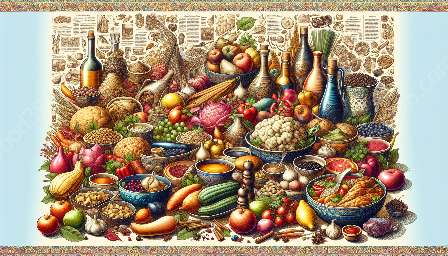Traditional food culture is deeply influenced by the natural abundance of fruits, vegetables, and grains in a region. This influence is closely tied to the region's geography and the origin and evolution of its food culture.
Influence of Geography on Food Culture
The natural abundance of fruits, vegetables, and grains in a region is heavily influenced by its geography. Regions with fertile soil, suitable climate, and ample water sources often have a rich bounty of produce, shaping the traditional food culture of the area. For example, in tropical regions, such as Southeast Asia, the abundance of fruits like mangoes, coconuts, and bananas, and vegetables like bamboo shoots and cassava, greatly influences the local cuisine.
Conversely, regions with more arid or harsh climates may rely on hardier grains and legumes, like barley, lentils, and chickpeas in the Middle East, showcasing how the natural environment directly shapes the types of food grown and consumed in a region.
Origin and Evolution of Food Culture
The natural abundance of fruits, vegetables, and grains also plays a pivotal role in the origin and evolution of food culture. Over time, as communities settled and agriculture developed, the availability of certain crops became foundational to the local diet and culinary traditions. For instance, the cultivation and consumption of rice in East Asia and wheat in the Middle East and Mediterranean regions have greatly influenced the food culture and dietary habits of these areas for millennia.
As food cultures evolve, the natural abundance of certain foods continues to shape the local dishes and culinary practices. For example, the surplus of olives and grapes in the Mediterranean has led to the widespread use of olive oil and wine in the region's cuisine, becoming iconic elements of Mediterranean food culture.
Conclusion
In conclusion, the natural abundance of fruits, vegetables, and grains in a region plays a vital role in shaping its traditional food culture. From influencing the types of ingredients used in local dishes to driving the evolution of culinary practices, the geography, and natural resources directly impact the food culture of a region, highlighting the interconnectedness of food, geography, and cultural evolution.


